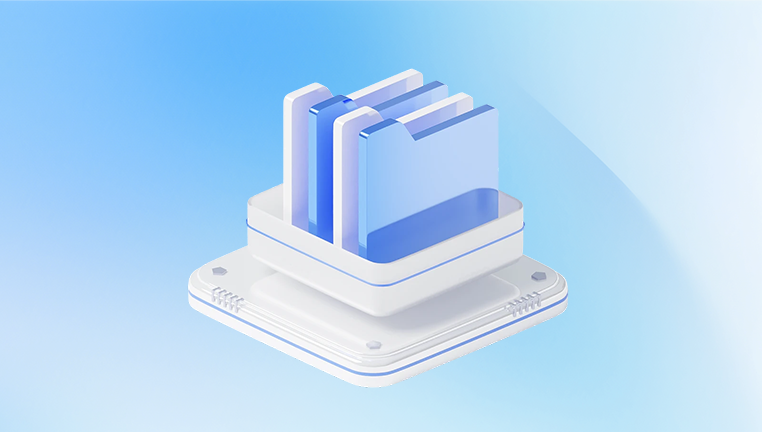Fix Damaged Video Files (Simple Steps)
A damaged video file can be unplayable, partially corrupted, or show strange artifacts and glitches.
Before diving into repair techniques, it’s important to understand the reasons why video files may become corrupted or damaged. Video corruption occurs when the file structure is disrupted, making it unreadable or unplayable. This disruption can affect various file types, including MP4. AVI, MOV, MKV, and others. The main causes of video file corruption include:
Improper File Transfer: Interruptions during file transfer, such as network issues, can cause the file to become incomplete or damaged.
Storage Media Failure: Corruption can occur if the storage device (e.g., SD card, USB drive, hard drive) is physically damaged or suffers bad sectors.
Virus or Malware Infection: Malicious software can corrupt files, rendering them unplayable or unreadable.
File System Errors: Errors in the file system due to improper shutdowns, power surges, or drive corruption can lead to video corruption.

Codec or Format Issues: If the file format or codec used to encode the video is incompatible with the media player or editing software, it can result in playback issues or file damage.
Software Crashes: If a video editing tool or player crashes while saving or exporting a video, it can lead to file corruption.
Step-by-Step Guide to Fix Damaged Video Files
Depending on the extent of the damage, there are several methods available to repair video files. The solutions range from simple software fixes to advanced recovery tools. Here, we’ll explore the most effective methods to restore your damaged videos.
Method 1: Use Built-in Video Repair Features (For Common File Formats)
1.1 Repairing MP4 Files with VLC Media Player
VLC Media Player is one of the most widely used video players, and it offers a built-in repair tool for corrupt or damaged MP4 files. VLC can attempt to fix minor corruptions in the video file header, which is often the cause of playback issues in MP4 videos.
Steps to Repair MP4 Using VLC:
Download and Install VLC: If you don’t have VLC installed, download it from the official website.
Open VLC Media Player: Launch VLC on your computer.
Go to Preferences: Click on Tools in the menu and select Preferences (or press Ctrl + P).
Enable Automatic Repair for MP4 Files:
Click on the Input/Codecs tab.
Under Damaged or Incomplete AVI file, select Always Fix. While the setting is for AVI files, it also works for MP4 files in most cases.
Play the Corrupted MP4 File:
Go to Media > Open File and select the damaged MP4 file.
VLC will automatically attempt to repair the video while playing it. If the file is not too severely damaged, VLC may be able to fix it during playback.
Save the Fixed File: If VLC plays the file successfully, you can convert and save it as a new file by selecting Media > Convert/Save.
VLC can often fix issues with the header of MP4 files but is not suitable for more complex file corruption.
Method 2: Use Dedicated Video Repair Software
For more severe video corruption, using specialized software designed for video repair is the best option. These tools can analyze the video file, detect issues, and restore damaged sections without altering the rest of the video.
2.1 Using Stellar Repair for Video
Video file corruption can happen for a variety of reasons such as a sudden system shutdown, storage device failure, or a virus attack and can leave your precious footage inaccessible. Fortunately, Panda Fix offers a reliable solution to repair damaged video files in popular formats such as MP4. MOV, AVI, and MKV.
Panda Fix uses advanced algorithms to analyze the corrupted video file, detect the areas that are damaged, and restore them without affecting the quality of the content. The software is designed to repair issues such as video freezes, pixelated images, audio-video sync problems, and even corrupt headers that can make the file unplayable.
How Panda Fix Works:
Simple Interface: Panda Fix has a user-friendly interface that allows you to easily upload your corrupted video file and start the repair process with just a few clicks.
Deep Scanning: The software scans the entire file to detect any errors in the video or audio streams, fixing them while preserving the original quality of the video.
Preview Before Saving: Once the repair is complete, Panda Fix offers a preview of the repaired video to ensure everything is in order before you save it to your preferred location.
Batch Repair: If you have multiple damaged videos, Panda Fix allows you to repair them in batches, making it an efficient solution for large projects.
2.2 Using Remo Repair MOV/MP4
Remo Repair MOV/MP4 is another dedicated tool for fixing damaged video files, particularly MOV and MP4 formats. It is designed to fix corruption in the video and audio sections without affecting the content.
Steps to Repair MOV or MP4 Files with Remo Repair:
Download and Install Remo Repair: Install the software on your system.
Choose the Corrupted File: Launch the program and select the corrupted MOV or MP4 file.
Repair the File: Click on Repair to initiate the repair process. Remo will scan the file for errors and attempt to fix them.
Preview and Save the Repaired File: Once the repair process is finished, you can preview the fixed file and save it to your desired location.
Remo Repair MOV/MP4 can fix various corruption issues, such as header corruption, video freezes, and audio-video sync problems.
Method 3: Manual Fixes for Damaged Video Files
In some cases, you can attempt manual fixes to recover a damaged video file. This method is more technical and requires some expertise, but it can be helpful in certain situations.
3.1 Convert the Damaged Video File to Another Format
If the video file is not playing correctly in its current format, converting it to a different format might resolve the issue. You can use a tool like HandBrake, a free and open-source video transcoder, to convert the damaged video to another format.
Steps to Convert the Video:
Install HandBrake: Download and install HandBrake from the official website.
Load the Damaged Video: Open HandBrake and load the corrupted video file.
Choose Output Format: Select a different format (e.g., from MP4 to MKV) that might bypass the corruption.
Start Conversion: Click on Start Encode to begin the conversion. If the corruption is not severe, the output file may work properly.
This method works if the corruption is not widespread, and it can help bypass minor issues in the file.
3.2 Using a Hex Editor
If the video file is severely damaged and you have some technical knowledge, you can attempt to repair it using a Hex Editor. A hex editor allows you to examine the raw data of a video file and manually fix corrupted parts, such as the file header or data blocks.
Steps:
Open the File in a Hex Editor: Use a hex editor like HxD or Hex Fiend to open the corrupted video file.
Examine the File Structure: Look for irregularities in the file’s structure, such as incomplete data or corrupted sections.
Fix the Header: You may need to manually correct the file header or other binary data to make the video playable. This step requires a good understanding of video file formats and binary data.
Save the Repaired File: After making corrections, save the file and attempt to open it in a video player.
This method is complex and is recommended only for users familiar with binary data and file structures.
Method 4: Preventing Future Video File Damage
After successfully repairing your damaged video files, it’s important to implement measures to prevent future corruption. Here are a few tips:
Use Reliable Storage Devices: Ensure that you store your videos on reliable, high-quality storage media. Backup your important videos on cloud storage or external hard drives.
Always Eject Storage Devices Properly: When transferring videos, always eject USB drives, SD cards, or external hard drives properly to avoid file corruption.
Keep Your Software Updated: Ensure that your video editing and playback software are up to date, as newer versions often fix bugs and improve file handling.
Use Trusted Antivirus Software: Protect your files from malware by using reliable antivirus software to scan for and remove potential threats.
Create Backups: Regularly back up your videos to avoid losing important files in case of corruption.

